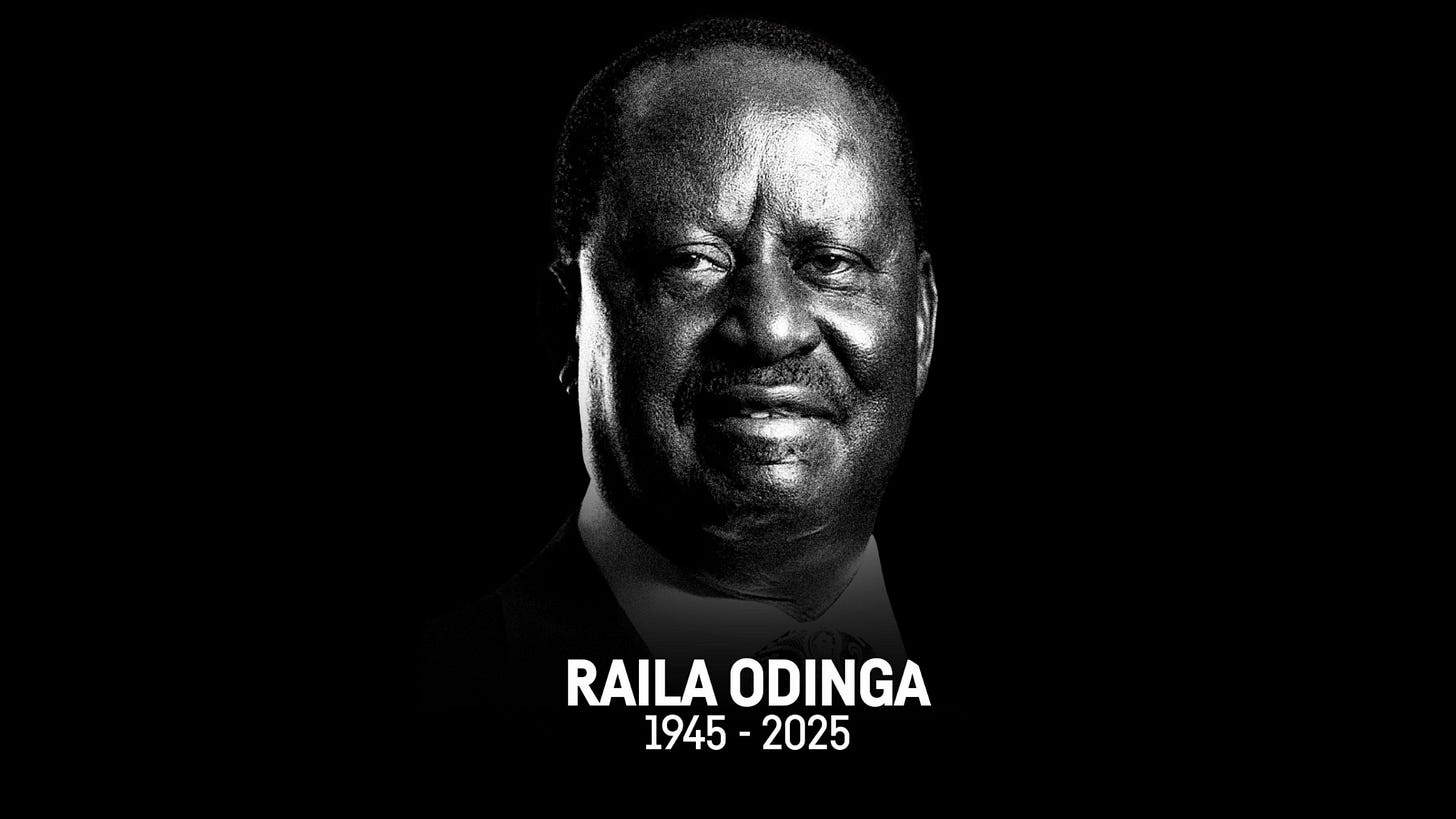Intelligence Analysis | An End to the Enigma: the Death of Raila Odinga and the Reconfiguration of Kenyan Politics
Ujasusi Blog’s East Africa Monitoring Team | 17 October 2025 | 0045 BST
I. The End of Charismatic Opposition and the Stability Vacuum
The death of Raila Amolo Odinga on October 15, 2025, in Koothattukulam, Kerala, India, following a heart attack at the age of 80, marks a definitive turning point in Kenyan political history. As a perpetual opposition leader and the central gravitational force in Kenyan politics for three decades, his passing closes the chapter on the era defined by the struggle for the “Second Liberation”. The immediate response from the incumbent government, including President William Ruto’s declaration of a seven-day national mourning period and promise of a state funeral, is a calculated attempt to claim the mantle of national unity and manage the political transition.
Odinga’s legacy is complex and contradictory. Internationally, he is lauded as a “towering statesman” and a “steadfast champion of democracy” whose commitment to reform left an indelible mark across Africa. Domestically, he is credited as the chief architect of the 2010 Constitution. However, his final years were defined by a series of tactical accommodations, collectively known as “Handshake politics”. This strategy culminated in his controversial 2025 political pact with President Ruto. This accommodation severely eroded his moral authority, particularly among the newly mobilised Generation Z (Gen Z) cohort, who perceived his alliance with the administration as a profound betrayal following the state’s violent repression of the 2024 anti-tax protests.
The primary consequence of Odinga’s death is the creation of a massive power vacuum within Kenya’s opposition apparatus. The Orange Democratic Movement (ODM), which he led from 2005 until his death, was structurally dependent on his charismatic leadership, often referred to as “Odingaism”. The party now faces a high risk of organisational fragmentation. The absence of a unified, singular opposition figure fundamentally alters the trajectory toward the 2027 general election, providing a significant strategic advantage to President Ruto. The contest will likely shift away from a dynastic rivalry to a complicated, multi-polar struggle driven by regional, generational, and policy-based interests. Current risk assessments indicate high instability risk within the ODM, moderate risk of localised political volatility due to heightened succession rivalries, and a significant opportunity for the Kenya Kwanza administration to exploit the opposition’s anticipated disarray.


